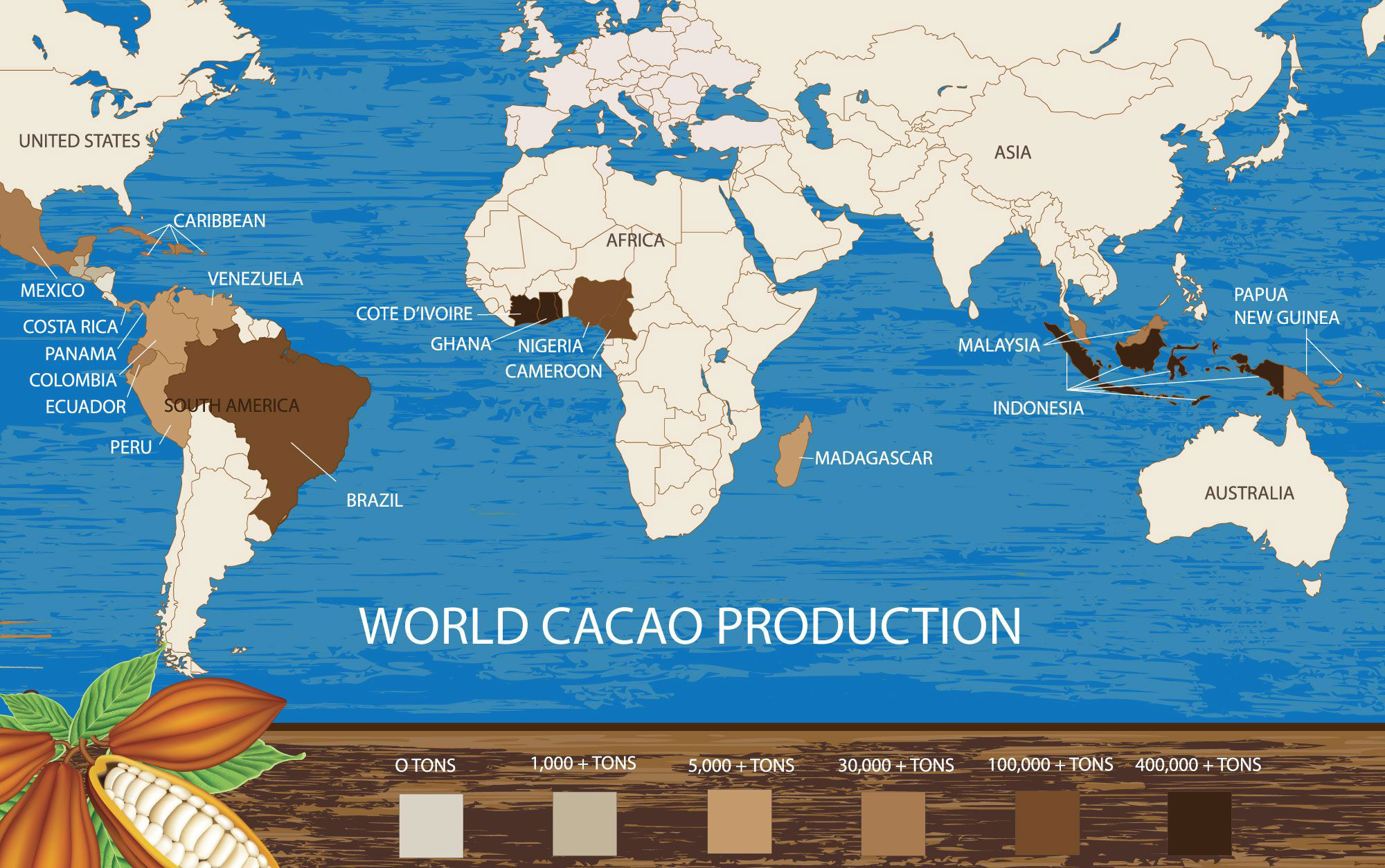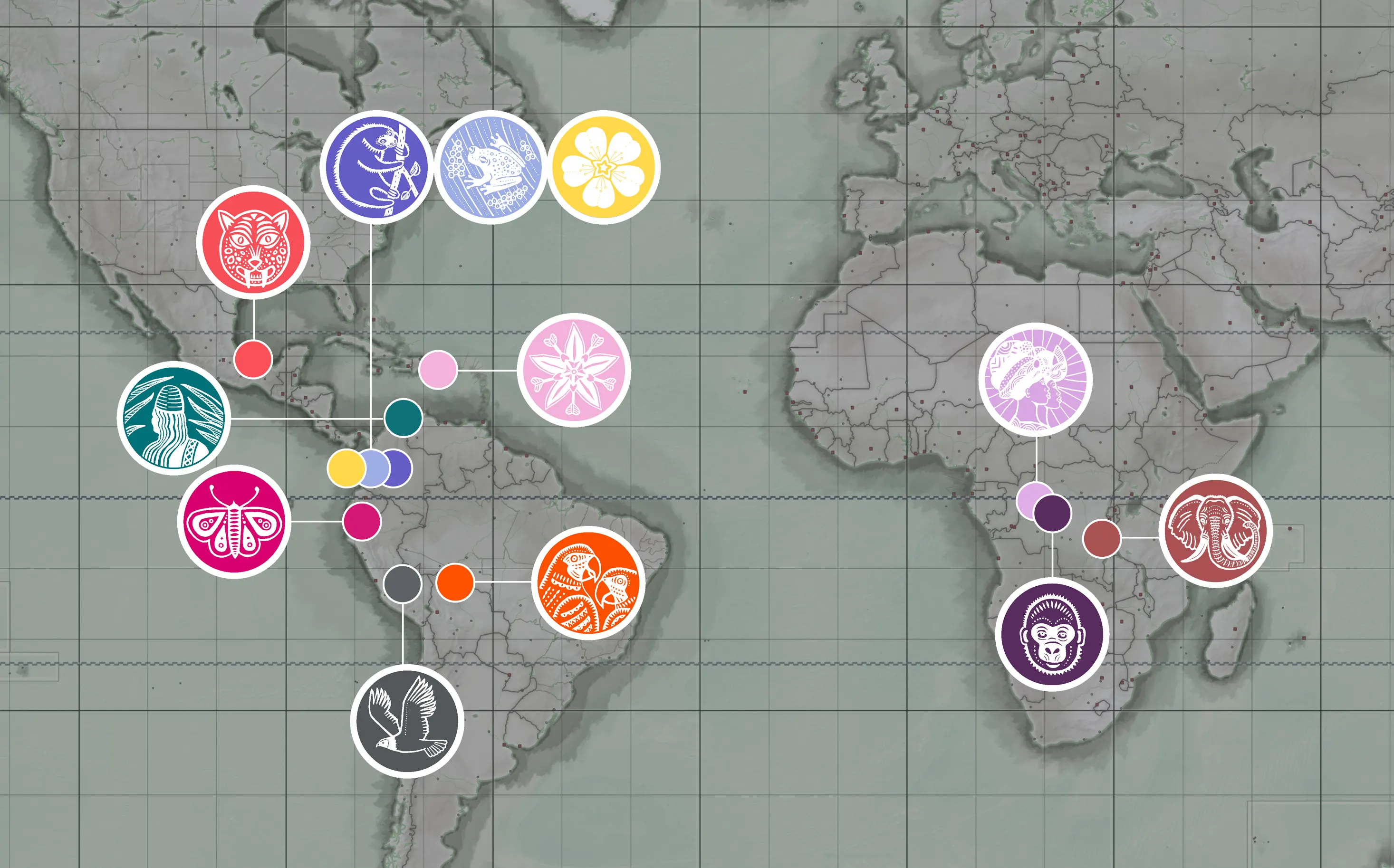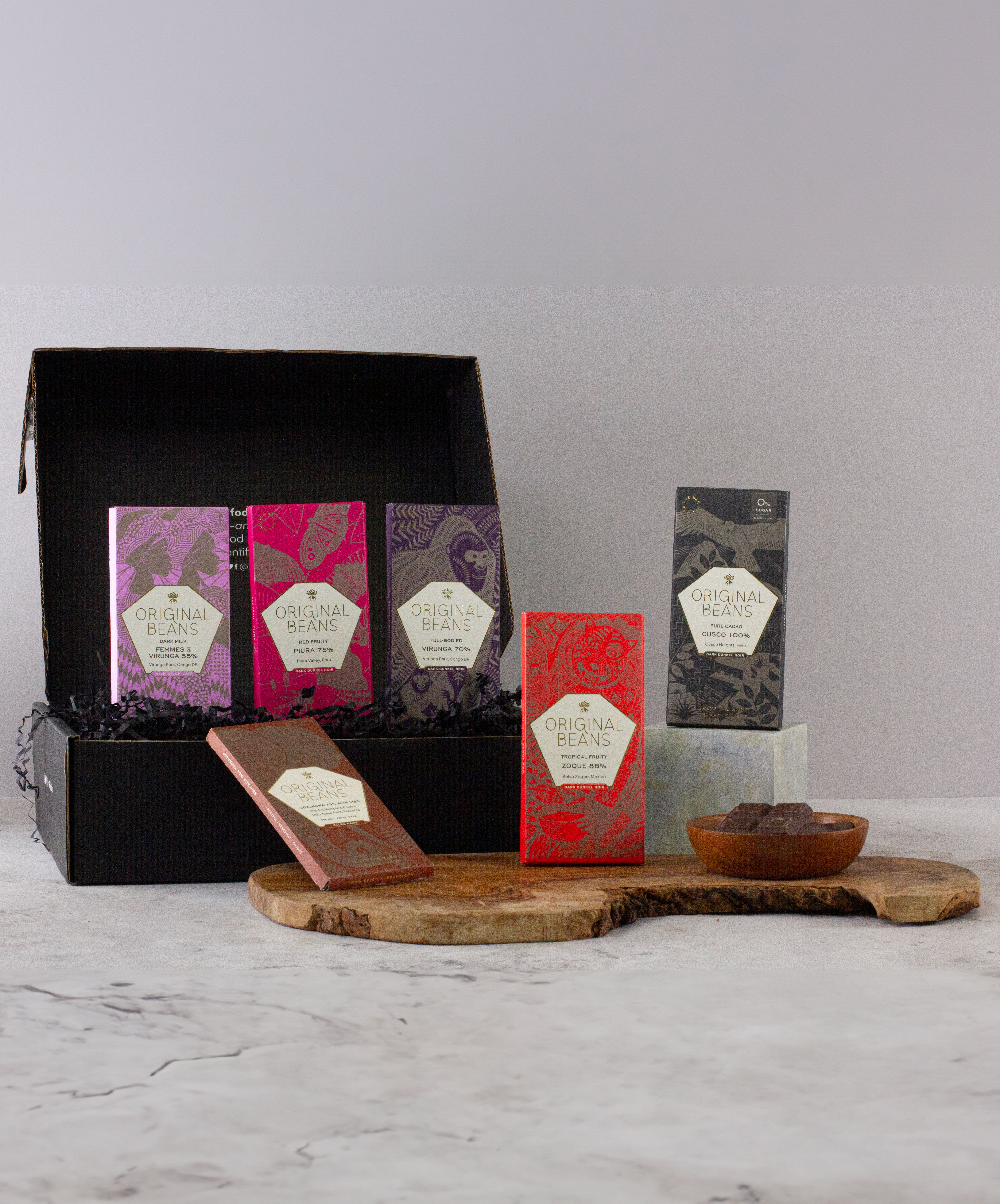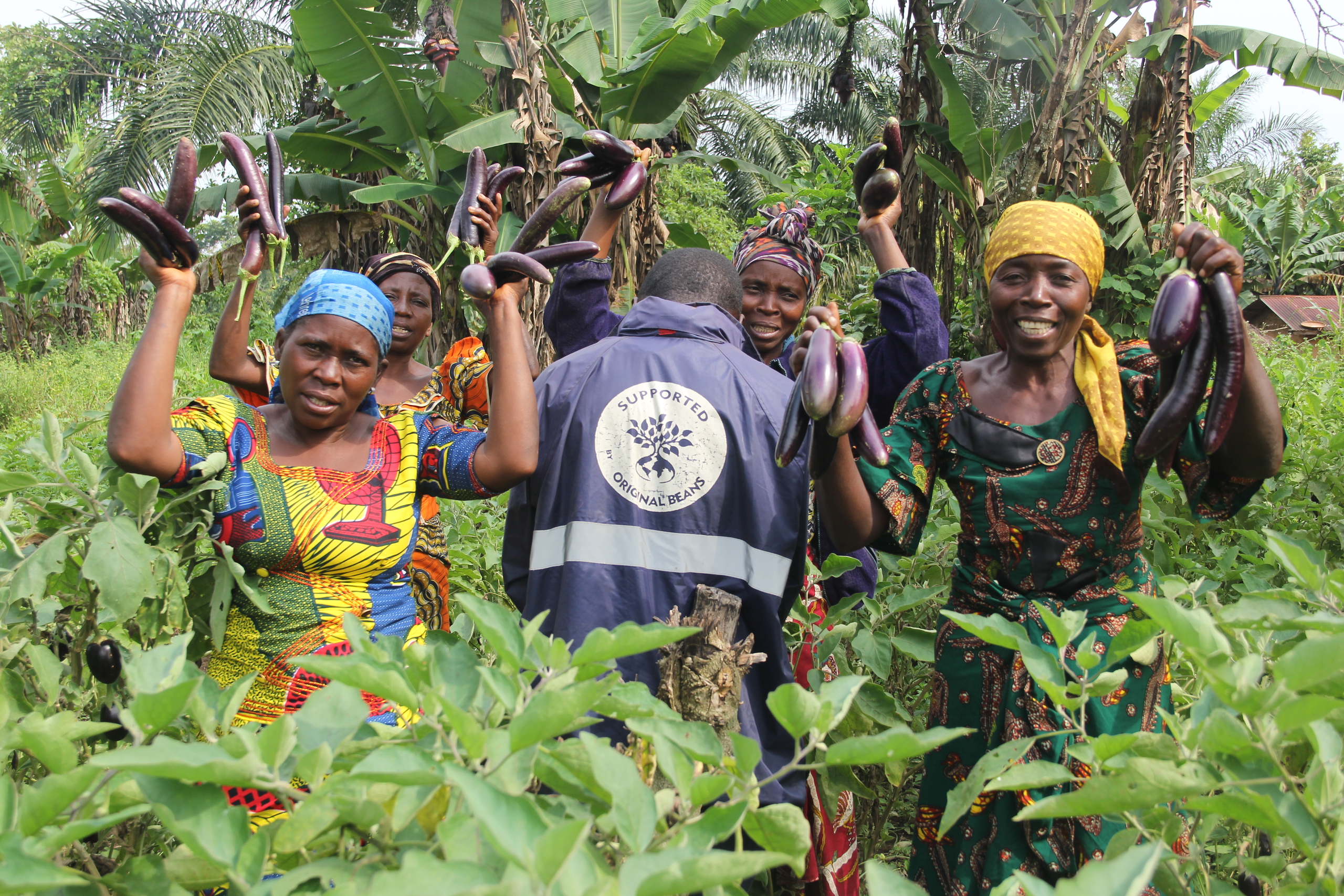Have you ever wondered about the sustainability of chocolate production? Is it possible for chocolate to be both delicious and environmentally friendly? Let's take a delightful journey into the realm of sustainable chocolate production and discover the eco-conscious side of this beloved treat.
Chocolate Production Centres Around the World
The country that produces the most chocolate is the United States. However, it's important to note that while the United States is a significant consumer and manufacturer of chocolate products, the cacao beans used in chocolate production primarily come from countries in West Africa, including Ivory Coast, Ghana, and Nigeria. These regions are among the world's largest producers of cacao beans.

Is Chocolate Environmentally Friendly?
The answer lies in sustainable cocoa. Sustainable cocoa production forms the foundation of environmentally friendly chocolate. This approach encompasses responsible farming practices, biodiversity conservation, and ethical labour standards.

Sustainable Cocoa: The Heart of Eco-Friendly Chocolate
Sustainable cocoa production revolves around several vital aspects:
Responsible Farming: At its core, sustainable cocoa production seeks to minimise the environmental impact. This involves using fewer harmful pesticides and chemicals, promoting organic practices, and adopting innovative farming techniques.
Biodiversity Preservation: Many cocoa farms are nestled in regions teeming with biodiversity. Sustainable cocoa production places a premium on safeguarding these natural ecosystems. Reforestation efforts and the creation of cocoa agroforestry systems help protect and enhance the rich biodiversity in cocoa-growing areas.
Ethical Labor Practices: Sustainability in chocolate production extends beyond the environment. It also encompasses the welfare of cocoa farmers and labourers, ensuring they receive fair wages, safe working conditions, and opportunities for growth.
Certification Programs: To champion sustainable cocoa production, certifications such as Fair Trade and Rainforest Alliance have emerged. These certifications set standards for ethical and environmentally responsible practices, offering consumers a clear path to support sustainable chocolate.
In summary, sustainable chocolate production is the sweet result of conscious efforts to harmonise our love for chocolate with a commitment to the planet and its people. The key lies in choosing chocolate products with sustainability certifications, like Fair Trade or Rainforest Alliance, which not only promise delightful taste but also contribute to the cause of sustainable cocoa production.
So, as you savour that piece of sustainable chocolate, relish the fact that you're not only pleasing your palate but also supporting a greener, fairer, and more environmentally friendly cocoa industry.
How is Chocolate Production Bad for the Environment?
Chocolate, a beloved treat enjoyed by millions worldwide, has a hidden side that raises concerns for the environment. The sweet indulgence we savour can come at a significant cost to our planet. From deforestation and chemical use to water consumption and climate change implications, the production of this delectable delight carries a complex environmental footprint. By understanding these challenges, we can explore opportunities for more sustainable chocolate production and consumption. Here are ways that chocolate production can be harmful to the environment and unsustainable:
Deforestation: One of the significant environmental issues related to cocoa production is deforestation. Many cacao plantations are established by clearing large tracts of rainforest. This deforestation contributes to habitat loss for wildlife, reduces biodiversity, and increases greenhouse gas emissions.
Pesticide and Chemical Use: Traditional cocoa farming often relies on the heavy use of pesticides and fertilisers. These chemicals can pollute soil and water, harming local ecosystems and wildlife. They can also negatively affect the health of farmworkers and nearby communities.
Monoculture Farming: Cocoa farms often practice monoculture farming, where only one crop is grown. This depletes the soil of nutrients, reduces soil quality, and increases the risk of pests and diseases, leading to the need for even more chemical inputs.
Water Consumption: Cocoa production can be water-intensive, leading to increased pressure on local water resources. In regions where water is already scarce, this can exacerbate water scarcity issues.
Erosion: The clearing of forests and the intensive cultivation of cocoa can lead to soil erosion, which further degrades the land and can contribute to sedimentation in nearby water bodies.
Climate Change: Cocoa farming is vulnerable to climate change, as cacao trees are sensitive to temperature and humidity. Climate-related disruptions can affect crop yields and quality, making cocoa production less reliable and sustainable.
Child Labor and Fair Wages: The chocolate industry has faced criticism for child labor and unfair wages in some regions where cocoa is produced. These social issues are intertwined with environmental concerns, as poor labor conditions can lead to unsustainable farming practices.
Choosing eco-conscious chocolate brands, like Original Beans, is a small but impactful way to make a positive difference in our environment. These brands prioritise sustainability by sourcing their cocoa beans from regenerative and organic farms, helping to preserve biodiversity and protect fragile ecosystems.

Who are Original Beans?
Original Beans, founded by Philipp Kauffmann in 2008, is renowned for crafting high-quality, rare, and fair-trade chocolate. Their commitment to sustainability and ethical sourcing has made them pioneers in the European craft chocolate scene, earning accolades for their delicious products and efforts to conserve cacao sources and rainforest ecosystems.
What is Their Mission?
Since 2008, the company has been exploring remote rainforests to find the rarest and fairest cacao beans globally, aiming to transform the realms of chocolate, food, and luxury. Presently, they are at the forefront of Europe's craft chocolate movement, leading the way in adopting regenerative business practices.
While this might sound like they are boasting, they are far from achieving their ultimate goal of creating a food culture that rejuvenates the planet. However, they ensure that their chocolate offers an incredibly delightful experience while also supporting environmental preservation and the well-being of those who care for and inhabit these areas.

The Origins of Original Beans
Their story of uniting chocolate and conservation may seem complex, but it's quite straightforward. They produce some of the world's finest chocolate using the rarest and fairest cacao beans available, all while preserving these beans and the surrounding forest environments for future generations of chocolate enthusiasts. They have earned numerous taste awards, gained the favor of top chefs, and optimized every aspect of their business to have a positive impact on both people and the planet.
The origin of Original Beans dates back to 2008, with its roots extending to 1795 when the founder Philipp's ancestor wrote a book about forests. In this book, he advocated for the responsible stewardship of forests for the benefit of future generations, coining the concept of "Nachhaltigkeit" (sustainability). It is a pity that such valuable advice was not heeded.
Fast Forward…
Fast forward 213 years, and Philipp, the company's founder, took heed of this wisdom. He departed from his role at the United Nations and embarked on a journey to establish a business that would eventually become one of the world's first climate-positive companies, offering something wonderfully simple: exceptional chocolate.

Original Beans: Cocoa Production process explained:
Have you ever wondered how chocolate is produced? The chocolate manufacturing process is a fascinating journey that combines tradition, craftsmanship, and sustainability. In this exploration, we will delve into the steps of the chocolate production process, uncovering how cocoa production can be sustainable while answering the question, "How is chocolate manufactured?" Join us on this delectable voyage from cacao beans to your favourite chocolate treat.
Regenerative Farming: The process begins with sustainable farming practices that aim to restore and nurture the cacao plants and the environment they grow in.
Fermentation (Spontaneous): The harvested cacao beans undergo a natural fermentation process, where they are left to ferment spontaneously. This step is crucial for developing the beans' flavours.
Drying (Sun Only): After fermentation, the cacao beans are sun-dried, which helps reduce moisture and preserve their quality. No artificial drying methods are used; it's all done in the sun.
Storing (Zero Fumigation): The dried cacao beans are stored without the use of fumigation chemicals. This ensures that the beans remain free from harmful chemicals.
Roasting (Slow and Low): The beans are gently roasted at low temperatures and for an extended time. This slow roasting process brings out the complex flavours of the cacao without overcooking it.
Grinding (16 Micron): The roasted cacao beans are finely ground to a particle size of around 16 microns. This step helps create a smooth chocolate texture.
Conching (Medium): The ground cacao is mixed and aerated in a conche, a machine designed for this purpose. This step further refines the texture and taste of the chocolate.
Tempering (Gentle, Gentle): The chocolate is gently tempered, a process of carefully heating and cooling it to ensure it has a glossy appearance and a pleasant snap when broken.
The exact point where cacao becomes chocolate is a bit subjective and varies depending on the craft and preferences of the chocolate maker. These steps, however, represent the journey from cacao beans to the delicious chocolate we enjoy.

12 Solutions To End The Nature Crisis
In a world where environmental challenges are mounting, organisations like Original Beans are paving the way toward a more sustainable future. Their commitment to addressing the nature crisis is not just about making chocolate; it's about making a difference. Through a comprehensive set of twelve solutions, Original Beans demonstrates how conscious choices can have a profound impact on our planet. These include:
Solution 1: Prioritise Plant-Based Eating
Eating more plants and reducing animal products is a powerful choice for personal health and the planet. Original Beans ensures that 75% of their products are vegan.
Solution 2: Choose Natural Foods
Original Beans believes in transparency. They make chocolate with only one ingredient - beans, free from additives like lecithins or vanilla.
Solution 3: Embrace Tree-Based Foods
Original Beans sources 100% single varietal cacaos, promoting the importance of food-producing trees in carbon sequestration and biodiversity preservation.
Solution 4: Opt for Organic
To avoid the harmful effects of pesticides, choose organic. All of Original Beans' cacaos are 100% certified organic.
Solution 5: Support Composting
Compost is a simple way to enhance soil health. Original Beans' packaging is 95% compostable or biodegradable.
Solution 6: Protect Rainforests
Original Beans emphasises the vital role of tropical forests and supports Indigenous rights. In 2021, their growers protected 27,908 soccer fields of pristine rainforest.
Solution 7: Preserve Wilderness
Biodiversity, including swamps, elephants, and coral reefs, plays a crucial role in climate resilience. Original Beans' foundation donated USD 136,000 to conservation in 2021.
Solution 8: Plant Trees Responsibly
Original Beans has a long-standing tree planting program, with customers and growers planting 1.66 million trees in 2021.
Solution 9: Invest in Climate Forests
Original Beans offers "Climate Forests" certificates to actively reduce greenhouse gas emissions.
Solution 10: Combat Poverty
Original Beans pays cacao growers 1.78 times the Fairtrade cacao price, addressing the challenges of poverty in cacao farming families.
Solution 11: Empower Women Farmers
Supporting women farmers can significantly reduce global malnutrition. Original Beans empowers hundreds of women cacao growers.
Solution 12: Stand with Indigenous Peoples
Indigenous communities are critical stewards of biodiversity. Original Beans celebrates their traditions and cacaos in their "select tribal" chocolates.
From promoting plant-based diets to protecting rainforests and supporting Indigenous communities, each solution represents a step forward in our collective journey to safeguard the natural world.

What are the Varieties of Cacao Beans?

There are several types of cacao beans, with the two most common varieties being Criollo and Forastero. Criollo beans are often considered the finest and most delicate, known for their complex flavour profiles. Forastero beans are more robust and are widely used in commercial chocolate production due to their disease resistance and higher yields. There is also a third variety called Trinitario, which is a hybrid of Criollo and Forastero, offering a balance of flavour and hardiness.
What are the Characteristics of Cacao Beans?
The main differences between cacao beans lie in their flavor profiles, with Criollo beans typically being milder, smoother, and more aromatic, while Forastero beans tend to have a stronger, more straightforward chocolate flavor. Trinitario beans combine some of the qualities of both Criollo and Forastero, making them versatile for various chocolate applications. Chocolate makers often blend these bean varieties to achieve specific flavour profiles and textures in their products.
Original Beans explores the farthest corners of the globe to source the rarest ingredients. Since 2008, their intrepid Bean Team has ventured into the most remote, biologically diverse, and threatened ecoregions, often referred to as biodiversity hotspots, in order to procure original beans for their customers. Check out their range here: ORIGINAL BEANS
In Summary, Original Beans chocolate isn't just a delightful indulgence for your taste buds; it's a commitment to a better, more sustainable world. With their unwavering dedication to preserving biodiversity, supporting local communities, and promoting ethical practices, Original Beans sets a shining example in the world of chocolate production. Every bite of their exquisite creations tells a story of conservation, sustainability, and a passion for fine craftsmanship. So, the next time you savor a piece of Original Beans chocolate, relish not only the exquisite flavor but also the knowledge that you're part of a movement to protect our planet, one delectable cocoa bean at a time.
